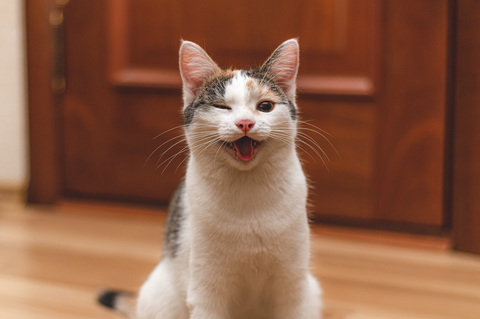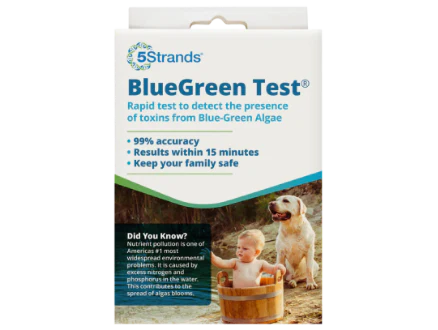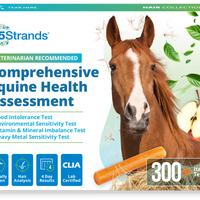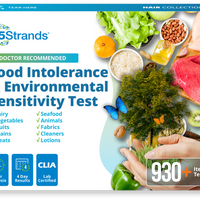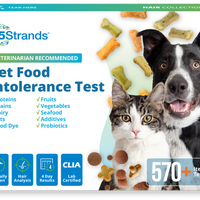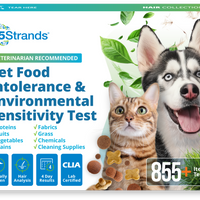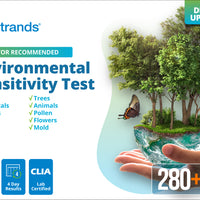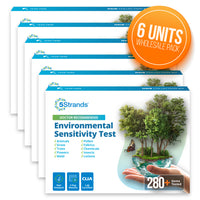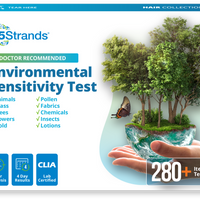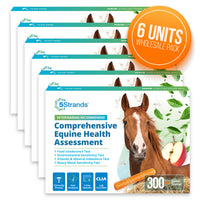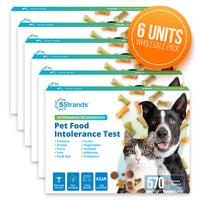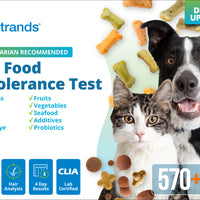Is your cat scratching more than he or she used to? Do you find that your cat vomits more often, either after eating a meal or for no apparent reason? If so, it could be because of a food or environmental allergy.
Our feline friends can suffer from allergies just like humans do. Allergy symptoms can arise based on your cat’s diet or their environments or both.
Types and Causes of Cat Allergies
The following are the most common allergies in cats.
- Environmental - this includes items such as pollen, grass, mold, fungi, dust, other animals, cleaning products, perfume, and even cigarette smoke! This is typically treated by the vet with topical medications, oral medication, or injections.
- Fleas - when this small insect bites your cat, the saliva from the flea can affect your cat’s entire body. Your veterinarian can help prescribe the correct flea prevention medication to help protect your cat.
- Food - your cat is reacting to a certain component in their diet. Most of the time it is a reaction to a protein source. Typically it is determined through an elimination diet. There are also different testing options available.
There is a misconception that allergic reactions to food are the mainstay of allergies in cats. While food allergies do exist, allergies to fleas and environmental allergens like pollen, grasses, and dust mites are far more prevalent.
So….Cats Can Have Allergies to Food?
Yes, cats can be allergic to ingredients in their food. However, food allergies are not actually that common in cats. They are much more likely to have allergies to things in their environment, such as mold and grasses. When cats do have food allergies, they are typically directed at a specific protein source.
Cats are very unlikely to be allergic to grains or gluten. In fact, although cats are carnivores, grain-free or gluten-free foods are no more healthy for them than foods with grains and gluten. Most cat foods contain carbohydrates, such as wheat, corn, or potato, because they are an important source of vitamins and minerals. The total amount of carbohydrates in the food is more important than whether it is grain-free. This is because foods higher in total carbohydrate content are associated with weight gain in cats.
What is a cat food allergy?
The term food allergy is used to describe an abnormal immune-mediated reaction to an antigen within food. In other words, food allergy refers to a reaction caused by the immune system (an allergic reaction) to a specific protein found within food. Your cat’s immune system views the food as being dangerous and reacts to the perceived danger.
Although we understand the mechanism by which food allergies occur, it is not known why these allergies occur. We do not understand why some cats develop food allergies and others do not.
Food allergies account for nearly 60% of excessive itching and scratching in cats.
There are actually two types of adverse reactions that can happen in cats:
- A true food allergy - A true food allergy causes the immune system to react and affects various organs in the body. Symptoms of a reaction can range from mild to severe—even life-threatening given enough time. The reaction tends to be more immediate so it can be much easier to identify. Dermatological reactions can manifest as itchy skin (pruritus), skin infections (dermatitis/pyoderma), and ear infections (otitis). While these are not immediately life-threatening, skin allergies can certainly be life-compromising and negatively impact your pet’s comfort, long term health, and quality of life when left untreated.
- Food intolerance - Food intolerance, on the other hand, is not tied to the immune symptom. It is not life threatening and has a more delayed response time. This makes it very difficult to identify the item causing the issue. While it can be more digestive related symptoms, it also manifests in many skin related symptoms. Food intolerances are actually more prevalent than a food allergy. This is what 5Strands is actually testing for with their Pet Food Intolerance Testing kits.
How can you tell whether your cat is dealing with allergies?
These are a few signs, although keep in mind, these may not be all the symptoms and some of these symptoms could be caused by other issues. If you ever have any questions, your veterinarian should be your go-to resource.
- Sneezing and coughing
- Itching and redness
- Balding spots
- Fur ball problems
- Vomiting
- Diarrhea
- Flatulence or gas
- Weight loss
- Appetite loss
- Poor body condition
- Abdominal pain
- Runny eyes
- Continual licking of his fur/skin
- Respiratory problems-heavy breathing or snoring

Pet parents are typically very astute and in tune with their cats and will notice any changes in behavior or health and appearance. When and if you notice anything with your cat that is different than it was in the past, it’s best to write it down and keep track of when the itching or sneezing or vomiting and other symptoms occur. This will help you give your veterinarian a better picture and help him or her with a diagnosis or a treatment plan to help eliminate the allergic reactions and symptoms.
What foods are associated with food allergies?
In order for a cat to develop a food allergy, the food must be one to which the cat has been previously exposed. An animal cannot develop a true allergy to a food that it has not been exposed to.
According to Wendy Brooks, DVM, beef, dairy and seafood are responsible for 8 out of 10 allergies in cats. Often switching to a cat food containing duck and peas or venison and potato are good options.
The foods most commonly associated with food allergies in cats include:
- Protein - When ruling out food allergies, it is best to start with protein sources. While chicken is the most common protein allergy for cats, some may also be allergic to beef, lamb, and/or pork.
- Meat by-products - Meat by-products generally contain organs that humans do not eat, skin and pieces like the tail or hoof. Because by-products offer less nutrition than pure beef, avoid foods with these by-products.
- Seafood - Like chicken or beef, seafood is another leading cause of feline allergies. If you suspect fish is to blame, stop choosing seafood based cat foods and stick to venison or duck.
- Eggs - Cat food companies use eggs for added protein, but some cats will have allergies to the egg yolks or whites or even both.
- Dairy products - Cats are frequently allergic to the lactose found in cow's milk. Some pet foods add dairy products like milk powder or cheese for the calcium.
- Corn - Cornmeal and corn gluten meal are used as inexpensive fillers in cat foods. Many cats simply are allergic to any form of corn and will develop itchy, dry skin. In addition, some veterinarians believe there is a link between fillers and cat diabetes.
- Soy - Soy is added to cat food for the protein benefit, but it's a plant and really unnecessary to a cat's health. Remember cat’s are really carnivores! The possible allergic reaction to soy makes it an ingredient to avoid.
- Wheat gluten - Like corn products, wheat gluten is used as a filler in many cat food brands.
- Preservatives - Pet food companies use artificial preservatives to lengthen the shelf life of cat foods. Some experts believe these artificial preservatives like BHA and BHT may be carcinogens and that they may cause cat food allergies. If your cat has allergies, try using homemade cat foods to see if that clears the allergy symptoms up.
- Artificial coloring - Many inexpensive cat foods add artificial food coloring to their foods. The food coloring serves no purpose other than for visual appeal to humans and causes allergies in cats sensitive to the ingredients used in the artificial dyes.
Limited research has been performed in this area, and there may be other common allergens that we have not yet identified. It is not very common to see a true allergy to preservatives and artificial colorings. When your cat reacts to these items, it will probably be an intolerance that they are experiencing.
What do allergies to cat food or the environment look like?
Sometimes cat food allergies go unnoticed and undiagnosed because they look like other health issues. If your cat “never had a problem with his food before” a pet parent may not connect the food to the allergic symptoms.
Studies have shown that close to 20% of allergies cats deal with are a result of the food they eat. If you notice your cat suddenly starts sneezing or having digestive issues a pet parent may write it off to the cat “having eaten too quickly” or to “seasonal allergies.” This could be true, but without testing and even elimination of certain foods and treats, a food allergy is hard to pinpoint based on just observation.
You might also notice your cat avoiding her meals and it could be because she understands that eating it could lead to an allergic reaction. Gauge your cat’s food consumption and make note of that as well.
How will my veterinarian diagnose food allergies?
The chronic itching associated with food allergies can also be caused by a number of other conditions, such as mites, bacterial infection, yeast infection, or other types of allergies. Therefore, testing is required in order to determine the cause of your cat's skin condition.
There are different types of testing on the market. Your veterinarian will typically conduct some type of blood testing. They may also refer you to a vet dermatologist that can do a skin prick test. (This is the test that most people have done). There are also several at home test kits that can be purchased online. These at home kits are usually an entry level determination of what might be going on with your pet before you go to the vets and start spending big dollars!
The most reliable test for diagnosing food allergies is a food trial. This test involves feeding a special diet, one which does not contain any proteins that your cat has been previously exposed to, for 6-8 weeks. A food trial diet may take a number of forms:
- a hydrolyzed-protein diet (one in which the proteins are broken down to a size that is too small to be recognized by your cat's immune system),
- a commercially-available novel protein diet (one that does not contain any products that were present in your cat's previous foods), or
- a home-cooked novel protein diet (also one that does not contain any products that were present in your cat's previous foods).
While your cat is on a food trial, they must eat ONLY the prescribed food, water, and any other needed medications. It is very important that no other treats, supplements, or other edible products be fed during the food trial. So, if you have young children at home, you must make sure they are not sneaking food to your cat!
If your cat's allergy symptoms resolve while on the food trial, the next step is to perform a food re-introduction process. This involves re-introducing your cat's old food. If your cat's symptoms get better with the food trial AND return within one week of a food reintroduction, it is safe to assume that your cat has a food allergy.
Since Intolerances are much more prevalent than a true allergy, 5Strands has created a simple at home hair analysis test using bioresonance technology that will determine all of the food and environmental items that your cat is having an intolerance to. In one simple test, you will receive a report that will indicate all of the items your cat showed a response to and all of the items they did not respond to. You will be able to conduct an elimination plan and then be able to start reintroducing foods right after the elimination period. No need to spend weeks trying to figure out what you can and can not feed your furry friend! 5Strands testing results will save you so much time and energy.

How are food allergies treated?
Food allergies, like other allergies, cannot be cured. Instead, they are managed through avoidance of foods that trigger allergy flare-ups.
Once your pet has been diagnosed with a food allergy, you may choose to continue the food that you used during the food trial for long term maintenance. Alternatively, you may be able to work with your veterinarian to find a different food that will provide similar relief from symptoms. Every cat differs in the severity of their food allergies. Some cats may react dramatically to even trace levels of an offending allergen, requiring carefully controlled hypoallergenic foods, while other cats may have a higher tolerance and may do well on a different ‘flavor’ of a typical cat food.
Regardless, once you have found a diet that works for your cat, you will need to continue that diet long-term, avoiding cat treats and other foods that may trigger an allergic reaction.
With careful dietary control, the prognosis for cats with food allergies is typically good.
